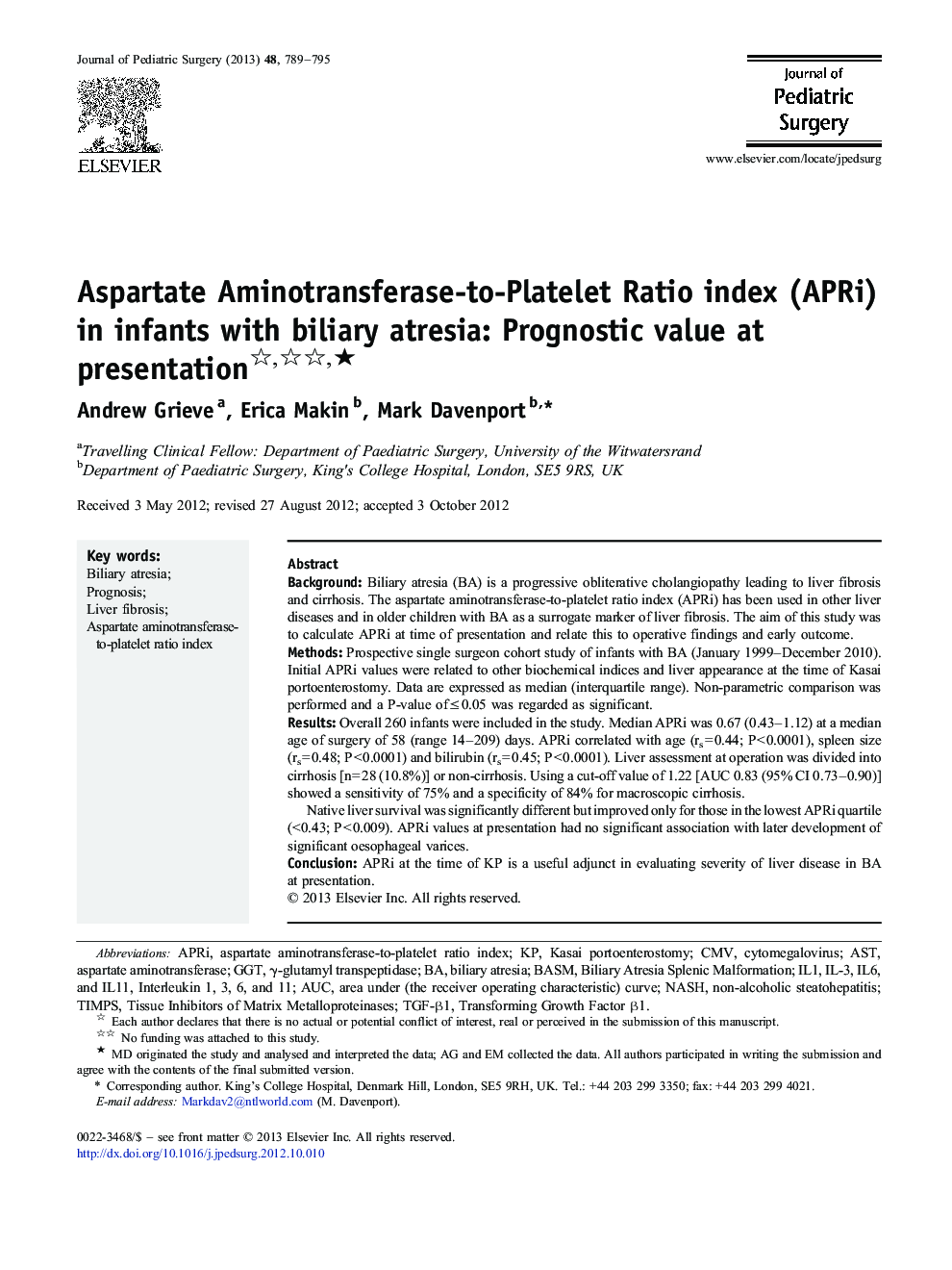| کد مقاله | کد نشریه | سال انتشار | مقاله انگلیسی | نسخه تمام متن |
|---|---|---|---|---|
| 6217670 | 1273767 | 2013 | 7 صفحه PDF | دانلود رایگان |

BackgroundBiliary atresia (BA) is a progressive obliterative cholangiopathy leading to liver fibrosis and cirrhosis. The aspartate aminotransferase-to-platelet ratio index (APRi) has been used in other liver diseases and in older children with BA as a surrogate marker of liver fibrosis. The aim of this study was to calculate APRi at time of presentation and relate this to operative findings and early outcome.MethodsProspective single surgeon cohort study of infants with BA (January 1999-December 2010). Initial APRi values were related to other biochemical indices and liver appearance at the time of Kasai portoenterostomy. Data are expressed as median (interquartile range). Non-parametric comparison was performed and a P-value of â¤Â 0.05 was regarded as significant.ResultsOverall 260 infants were included in the study. Median APRi was 0.67 (0.43-1.12) at a median age of surgery of 58 (range 14-209) days. APRi correlated with age (rs = 0.44; P < 0.0001), spleen size (rs = 0.48; P < 0.0001) and bilirubin (rs = 0.45; P < 0.0001). Liver assessment at operation was divided into cirrhosis [n = 28 (10.8%)] or non-cirrhosis. Using a cut-off value of 1.22 [AUC 0.83 (95% CI 0.73-0.90)] showed a sensitivity of 75% and a specificity of 84% for macroscopic cirrhosis.Native liver survival was significantly different but improved only for those in the lowest APRi quartile (< 0.43; P < 0.009). APRi values at presentation had no significant association with later development of significant oesophageal varices.ConclusionAPRi at the time of KP is a useful adjunct in evaluating severity of liver disease in BA at presentation.
Journal: Journal of Pediatric Surgery - Volume 48, Issue 4, April 2013, Pages 789-795